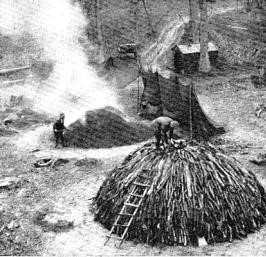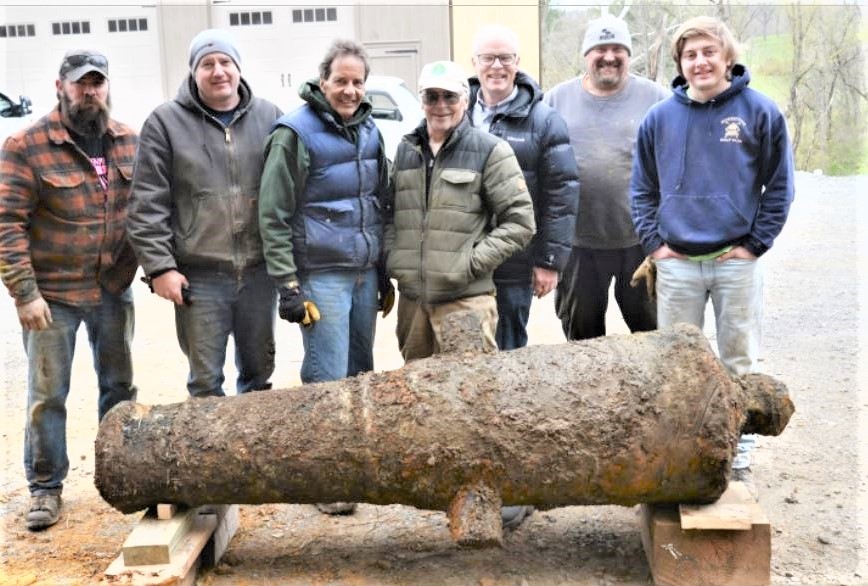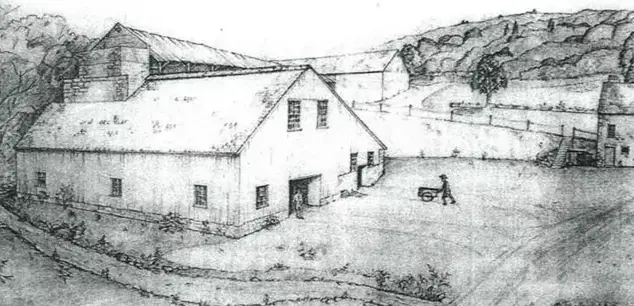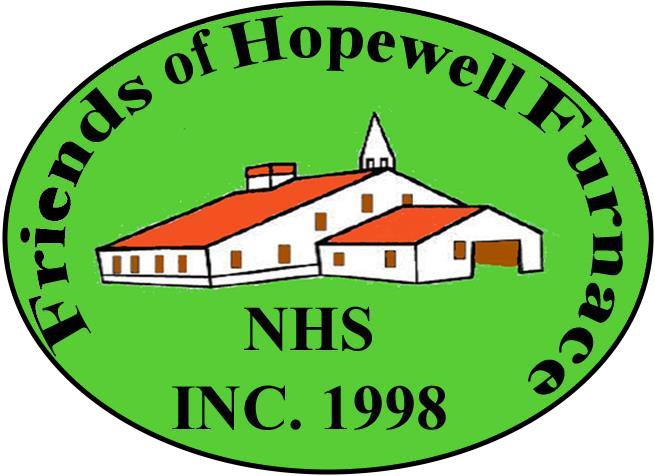This park is like entering an 18th Century time machine, complements of the Civilian Conservation Corps (CCC), who performed most of the major restoration projects. According to the Hopewell Ledgers over a period of 1935
to 1940 there were 392 men who participated in these projects.
to 1940 there were 392 men who participated in these projects.
Iron Plantation
These projects included the restoration of the cold blast charcoal fired stone furnace, the attached wooden Casting House, the fully operational 22 foot wooden water wheel, the fully operational leather bellows, the Iron Master’s house, a fully stocked 18th century store, the barn complete with farm animals, the Boarding house, worker houses, the operational blacksmith shop and several small gardens.
On special occasions throughout the year the entire park is brought to life by volunteers dressed in period appropriate clothing demonstrating casting, blacksmithing, sheep shearing, charcoal making and open fire cooking. Several years ago an 18th Century wedding was enacted. There is a project underway to restore the Boarding House hearth for safe usage to allow a demonstration of open hearth cooking.
A list of Cold Blast Charcoal Fired Stone Furnaces built in PA prior to the Hopewell Furnace’s
construction in 1771 can be viewed at the link below.
construction in 1771 can be viewed at the link below.
When the CCC restored the Hopewell Furnace to its original appearance, this helped to preserve the memories of each of the above listed furnaces. Some of the these furnaces stone stack still remain, and in Cornwall’s case much of the Iron Plantation still exists with the stone furnace, stone charcoal house and stone worker’s homes. Hopewell has gone further to provide a nearly complete 18th century reenactment of life as experienced by these hardy colonists. Each of these furnaces was economic centers that became one of the important foundations for building a new country.
After 1742, when Benjamin Franklin invented a method for casting iron plates such that they could be assembled into a fire box, the demand for this new method of heating homes caused new furnaces to be built just to satisfy this demand. After 1746, when the first iron rolling mill at Sarum, PA was built, it was now possible to make iron stove pipe which allowed the stove to be moved into the room. Furnaces such as Hereford specialized in making cast iron heating and cooking stoves. All of the furnaces where getting numerous orders for the various types of stoves.
Thomas Paine’s book Common Sense united many of the colonists to recognize that they no longer wanted to be ruled by a King whose sole qualification was his birthright. John Adam’s coined the phrase “ ruled by a Hereditary Monarch”. Many of the Iron Masters led this uprising against England and contributed in any way that they could such as casting cannon balls. The larger furnaces took on a bigger challenge of making cannon.
It was against the English law in the colonies to be caught casting cannon, punishable by execution. So after the fighting had begun and leaders in the Continental Congress recognized the need for more cannon to fight the British, the PA furnaces were asked to start casting cannon. Since none of the iron masters had cannon making experience it wasn’t until Captain Daniel Joy was asked to help that the furnaces had success making cannon. By June of 1776 some of the first cannon made by the PA furnaces were stored in the yard where the Continental Congress had been meeting. This may have been a contributing factor in giving the Continental Congress the confidence to sign the Declaration of Independence.
Thomas Paine’s book Common Sense united many of the colonists to recognize that they no longer wanted to be ruled by a King whose sole qualification was his birthright. John Adam’s coined the phrase “ ruled by a Hereditary Monarch”. Many of the Iron Masters led this uprising against England and contributed in any way that they could such as casting cannon balls. The larger furnaces took on a bigger challenge of making cannon.
It was against the English law in the colonies to be caught casting cannon, punishable by execution. So after the fighting had begun and leaders in the Continental Congress recognized the need for more cannon to fight the British, the PA furnaces were asked to start casting cannon. Since none of the iron masters had cannon making experience it wasn’t until Captain Daniel Joy was asked to help that the furnaces had success making cannon. By June of 1776 some of the first cannon made by the PA furnaces were stored in the yard where the Continental Congress had been meeting. This may have been a contributing factor in giving the Continental Congress the confidence to sign the Declaration of Independence.
Based on Capt Joy’s letters to the Continental Congress we learn that PA furnaces contributed over 400 cannon of various sizes through 1777 some of which were used in battle, some for outfitting the warships, and some for fixed locations. Two of the cannon were taken from Philadelphia up to General Washington to assist in the attack of the Hessians on Christmas morning in 1776. More of these cannon were used in the Battle of Brandywine and the Battle of Germantown in 1777.
The five PA furnaces contributed to making cannon and cannon balls were Warwick, Reading, Hopewell, Cornwall and Carlisle. The PA furnace that made cannon balls was Durham, Oley, Roxborough, Elizabeth and Pine Grove.
The five PA furnaces contributed to making cannon and cannon balls were Warwick, Reading, Hopewell, Cornwall and Carlisle. The PA furnace that made cannon balls was Durham, Oley, Roxborough, Elizabeth and Pine Grove.




Cannon recovered at Warwick Furnace of type manufactured at local furnaces including Hopewell for the Pennsylvania Navy in the Revolutionary War
The Friends of Hopewell Furnace National Historic Site

Version 3 Uploaded 2023 Nov 3 Appearance Improvments











